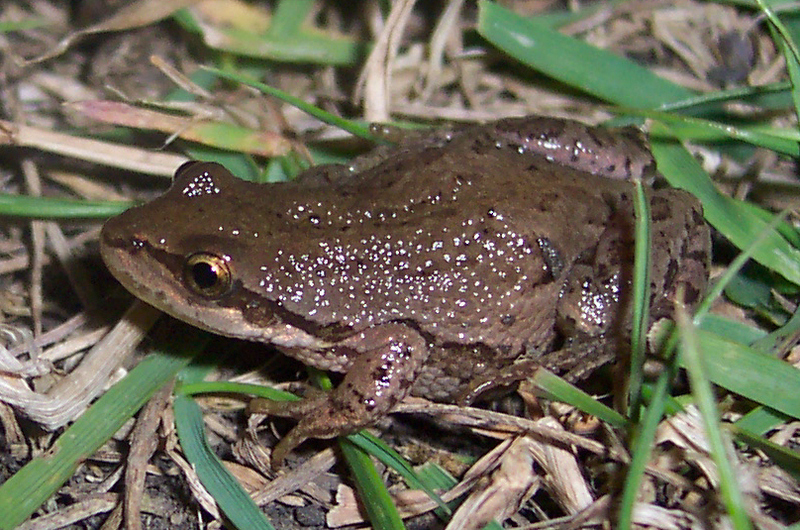|
| 질의: the snout | 결과: 329번째/526 | |
Boreal Chorus Frog (Pseudacris maculata) - Wiki
| 제목: | Boreal Chorus Frog (Pseudacris maculata) - Wiki
| |

| 해상도: 808x535
파일크기: 447735 Bytes
등록시간: 2007:10:08 16:55:35
|
Boreal Chorus Frog
From Wikipedia, the free encyclopedia
[Photo] A Boreal Chorus Frog, (Pseudacris maculata) from Edmonton, Canada. Photo by http://en.wikipedia.org/wiki/User:Tnarg_12345 | Permission is granted to copy, distribute and/or modify this document under the terms of the GNU Free Documentation License, Version 1.2 or any later version published by the Free Software Foundation; with no Invariant Sections, no Front-Cover Texts, and no Back-Cover Texts. A copy of the license is included in the section entitled "GNU Free Documentation License". |
The Boreal Chorus Frog, (Pseudacris maculata) is a species of chorus frog native to Canada from the west of Lake Superior to western Alberta and north to the North West Territories. It occurs in the USA throughout Montana, northwestern Wisconsin, northeastern Arizona, northern New Mexico and southwestern Utah.
Physical Description
This is a small species of frog, reaching about 30mm in length. It is highly variable however it is normally brown, but can be green on the dorsal surface, with 3 broken dorsal stripes, these stripes can be very distinct to quite faint. The is a dark band present from the snout, through the eye and continuing down the side. It has slightly enlarged toes discs to help in climbing small grasses and vegetation. This species is very similar Western Chorus Frog, (Pseudacris triseriata). It can be distinguished from this species by having shorter legs.
Ecology & Behaviour
This species can be found around permanent water bodies in cleared land and forest. Males make a "reeeek" call from grasses, vegetation or ground around the water body from April through to September. This is normally one of the first species of amphibian to emerge in spring, it is often found while snow and ice are still present.
http://en.wikipedia.org/wiki/Boreal_Chorus_Frog
| The text in this page is based on the copyrighted Wikipedia article shown in above URL. It is used under the GNU Free Documentation License. You may redistribute it, verbatim or modified, providing that you comply with the terms of the GFDL. |
|
^o^
동물그림창고 똑똑전화 누리집
^o^
|
|